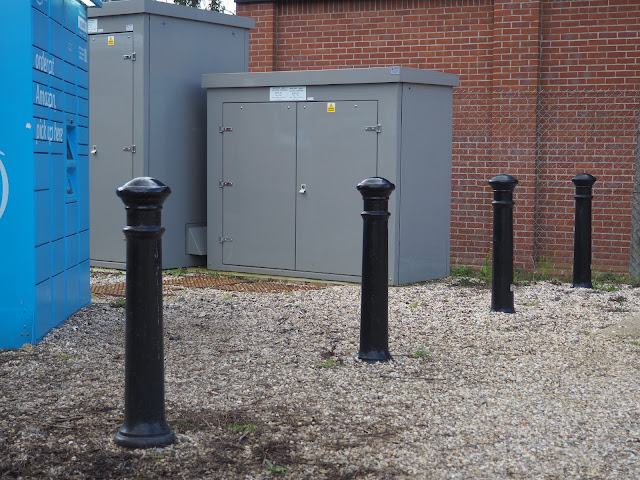And among the things I noticed and photographed in London were bollards. Now these are surely not a uniquely British thing: it seems that people all over the world would want to use something or other to block streets and traffic, but London seemed to have more than I’d ever seen anywhere in the States, though it seems that the American usage generally refers to posts on the side of a river or wharf, the things that boats are tied up to. I stand to be corrected on this.
After a while, having acclimatized to London and England, I sort of forgot about bollards – well, I didn’t really forget, I just got distracted by noticing other things - though not before the inamorata had given me the fine print seen beside me in this picture (thanks young Caroline). It’s attributed to Matt Brown/Londonist, and the highlight of the print is the J.G. Bollard.
But lately I’ve been reading Edwin Heathcote’s On the Street: In-Between Architecture, a book about street furniture. It’s full of great pictures, many taken by EH on his walking travels, along with photographs by some of the greats – Henri Cartier-Bresson, Helen Leavitt, Robert Frank, Vivian Maier, Eugene Atget and others.
Heathcote is a great noticer and his noticing often overlaps with my own minor obsessions - public benches, discarded gloves, manhole covers, Thomassons, and as it happens, bollards. He confirms that bollards are indeed international and cites examples in Rome, Siena and Amsterdam, says that they’re ‘the ultimate symbol of defence and defiance’ and concludes that ‘the future is absolute bollards.’
Suddenly I started to find bollards interesting again. Even so I felt they were a big city thing, but finding myself in Mistley, a somewhat picturesque village on the Stour Estuary in Essex, though one with a maritime and light industrial element, they seemed to be everywhere.
A local information sign referred to them as bollards, ie the things that boats are tied up to as per the American usage. So much to learn, so much still to notice.



















